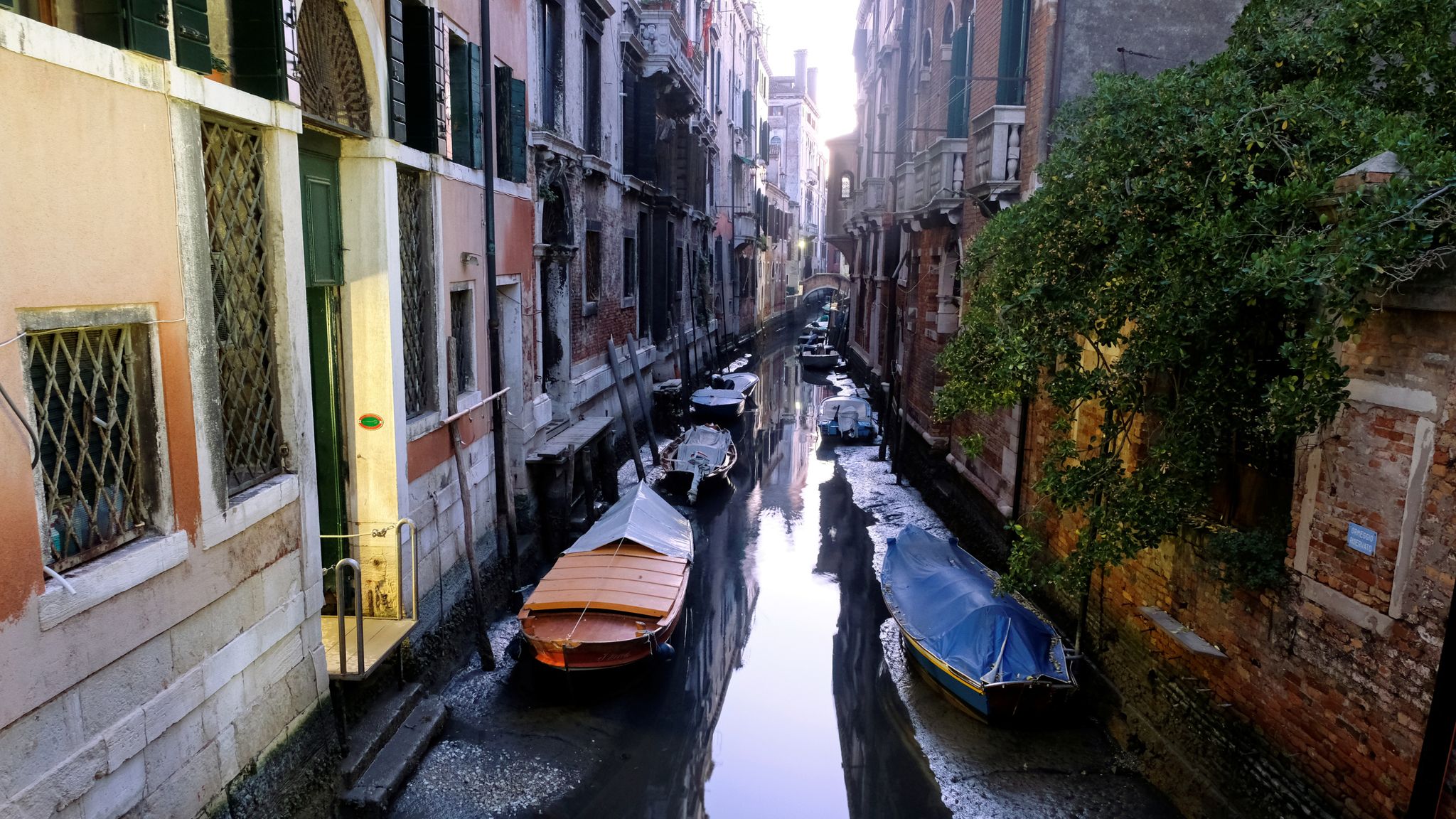
The famous canals of Venice are drying due to a high-pressure system stuck over the city. Read to know the root cause behind the drought-like situation.
The reason behind the canals of Venice drying
With some secondary canals of Venice drying up completely, images of docked gondolas, ambulance boats, and water taxis are gaining attention online. Experts believe the lack of rain and a long spell of low tides are responsible for the issue. The low levels of water are a surprise and flooding is a frequent issue for the city. The city has a unique geography and is made up of a collection of more than 118 small islands spread over a lagoon. The Venetian lagoon, separated from the Adriatic sea covers about 70,176 ha.
As per UNESCO, temporary settlements first showed up in the region in the 5th century. “Venice and its lagoon landscape is the result of a dynamic process which illustrates the interaction between people and the ecosystem of their natural environment over time,” explained UNESCO. However, the current waterless situation is disrupting everyday life in the region.
According to an AP report, the situation is forcing the medical crew to park ambulance boats far from their destination. Hence, the crew is forced to “sometimes hand-carry stretchers over long distances since their vessels can’t progress up canals, reduced to a trickle of water and muck”. Tourism is also taking a hit as the famous gondolas cannot navigate the dried-up canals of Venice.
More on the water crisis in Italy
Experts believe the issue in Venice is connected to the water crisis in Italy since last Summer. As per Legambiente, the crisis may worsen in Italy as the nation is “suffering at a time of year. When water supplies should be plentiful”. Legambiente is an environmental association in Italy. “This is worrying as snow is an important source of water in spring and summer when, by melting, it ensures water supplies in the months it is most needed,” it added.
Additionally, the Po, Itlay’s longest river traveling from the Alps to the Adriatic has 61 percent less than the normal level of water. Similarly, Lake Garda, the largest lake in Italy is suffering from the same issue. “Italy is very exposed to climate change, especially the Alpine region, and facing this crisis should be a priority. Drought is treated like an acute episode. But it’s becoming a chronic one now,” stated a 2022 report in Nature by Stefano Fenoglio. Fenoglio is a professor of zoology and hydrobiology at the University of Turin.
